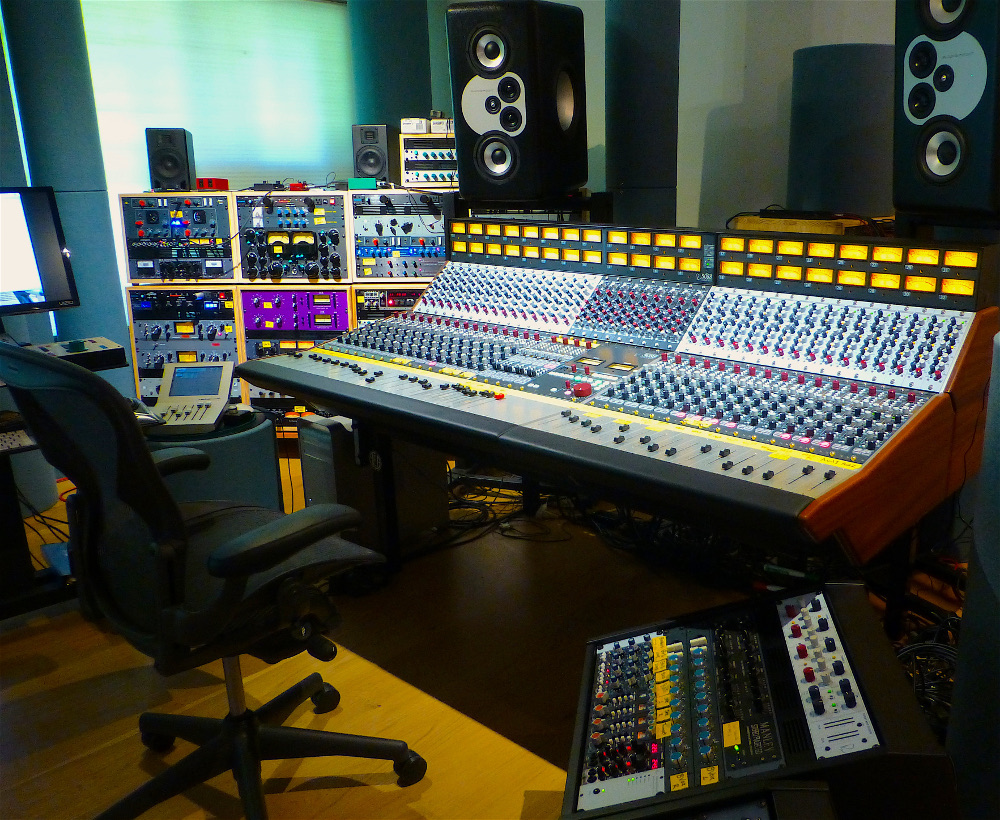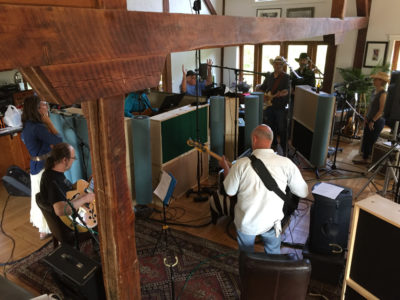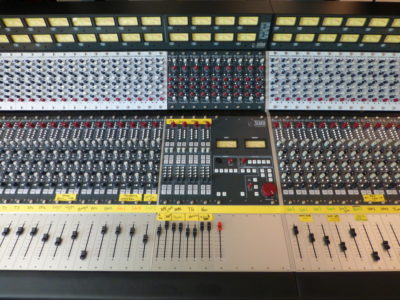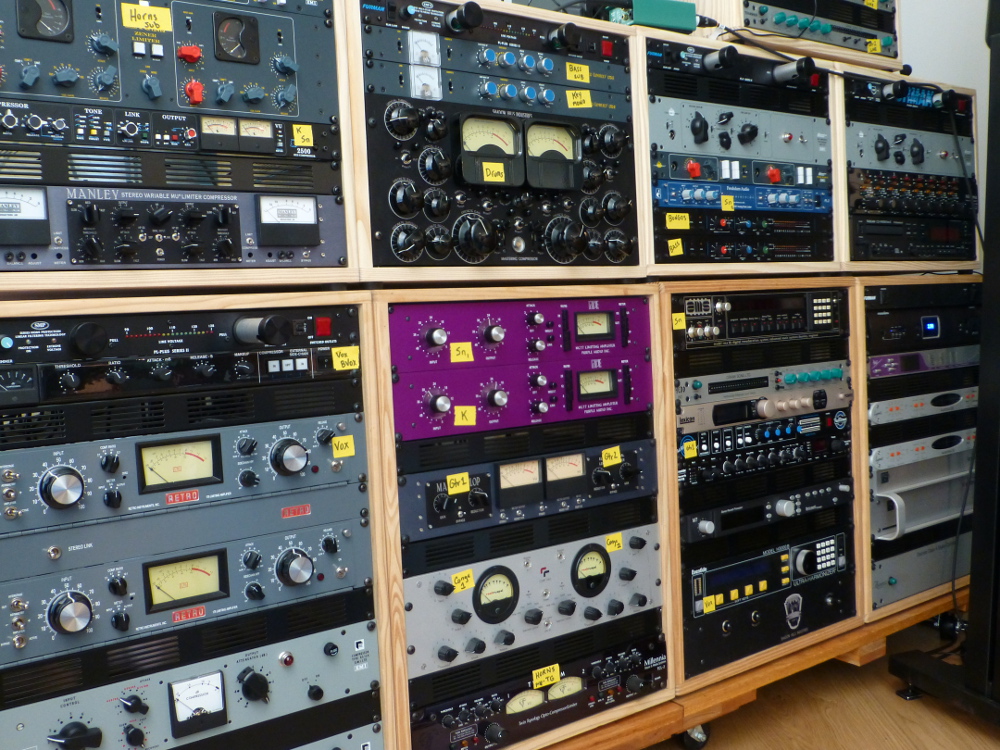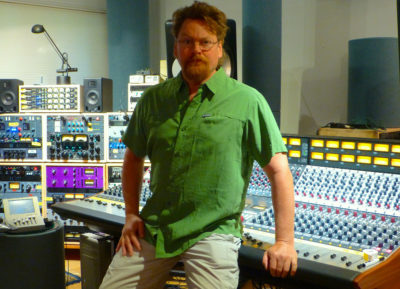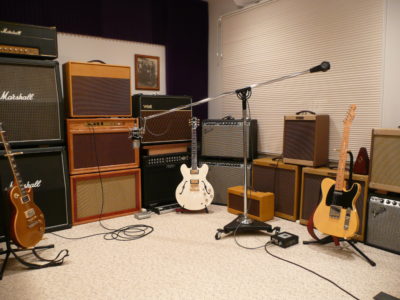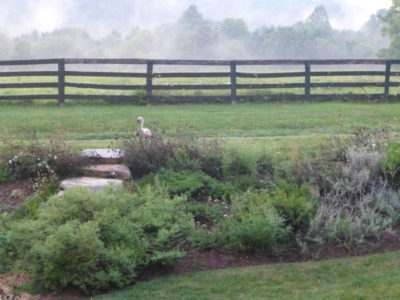Making the Mix Room: Stonebridge Studios – Leesburg, VA
If you seek affirmation that audio engineering really is science, read on. You’ll find it in the words and deeds of Stuart Martin, proprietor of Stonebridge Studios.
Set inside on 1860’s barn in idyllic Leesburg, VA, Stonebridge is Martin’s HQ for tracking and mixing, featuring a large live room with 21.5-foot ceilings complemented by a spacious control room complete with a Rupert Neve Designs 5088 console.
While the pastoral setting has its natural charms, dig into Martin’s mixing practice and you’ll see technical mastery everywhere. From the acoustic design and construction of the control room, to the research that went into his desk and the honing of his sizable sweet spot, it becomes obvious that little at Stonebridge is left to chance.
If you don’t have access to a farm of your own, there’s still plenty of essential tips and techniques within this “Making the Mix Room.” Learn the secret to Martin’s tricked-out master buss, the hack that made a big impact on his API 2500 compressor, plus the left-of-center choices in his oh-boy outboard, including the tape echo that made him forget about his Echoplex. And when it comes to how to mix vocals, don’t miss his killer trick for adding realism to the mix.
Mixer Name: Stuart Benson Martin
Website: http://www.stuartmartinaudio.com
Location: Leesburg, Virginia
Mix Philosophy: As a mixer, my primary function is to serve as a mediary between the artists’ emotional statement and their audience. Providing aural support for the song’s message, movement, and impact remains the paramount mantra throughout the mix process.
From childhood, musicianship and engineering have been intertwined, and this combination of “left brain/right brain” compelled me to pursue life as a touring musician and as a studio engineer (and degreed electrical engineer). Maintaining an awareness of whether I am engaging my “creative mind” or my technical side keeps me mindful of the goal and increases my efficiency and effectiveness. Mixing is a wonderful experience of balance – for example details/big picture, frequency, personalities, micro-dynamics vs song arc, etc…
Clients/Credits: The Stray Birds (two albums: co-producer, record, mix, master); The Steel Wheels (three albums: co-producer, record, mix, master); Jimmy Gaudreau & Moondi Klein (three albums: co-producer, record, mix); Jimmy Gaudreau (two albums: co-producer, record, mix, master); Psihomodo Pop (one album and two singles: master); Frank Vignola (working on one album and one single: record, mix); Bandhouse Gigs (upcoming album release and five previous albums)
Key Personnel: David Gardner, assistant
Down on the Farm: The live room is the former hayloft and has a 32’ x 38’ floor plan with 21.5’ ceilings. The post and beam structure is exposed with plaster walls and ceiling which result in a reverb time of 940 ms with a fairly smooth impulse decay. Since the room is “live” sounding, I opted to use portable baffles and walls to maximize flexibility.
Most of the groups I record here are acoustic-oriented, but several electric groups have been here, too. This past week featured a group with drums, bass, two guitars, pedal steel, and three to six vocalists, all recorded in the live room with no headphones and little overdubbing. It sounded big and exciting.
The control room is separated from the live room by the original stone wall. Its 23’ x 19’ space is acoustically treated for near and mid field operation in a live end/dead end format. A 12’ x 10’ vocal booth adjoins the control room.
Sound/Design: I have had three studio locations, and my current control room has been through three different designs ranging from acoustically dead to moderately live. While all configurations worked, the current setup is the best in terms of eliciting mix decisions that result in the best presentation of musical subtleties.
I “roughed-in” the Primacoustic panels and Owens-Corning 703 (4” and 8” panels) based on previous experience. Then I used a series of one-shot frequency bursts to get a read on the amount of echo and flutter. From my spreadsheet calculations of axial, oblique, and tangential modes, I expected certain problem frequencies which were confirmed by frequency sweeps. I constructed Helmholtz resonators based on the problematic low frequencies.
Because the console is a source of early reflections, I mounted my Barefoot MM12’s above the console meterbridge facing down at a 7-degree angle. The angle creates a greater direct sound to reflected sound bouncing off the console. Aiming the tweeters at 52” elevation 5.5 feet from the cabinet face ensured that my ears would be in the sweet spot. The imaging is fantastic, and I don’t have any hesitation with frequency sculpting or balancing issues. Clients are able to hear mixes quite clearly while seated at the console or in the back of the room.
For clients who need an impression of power, two Martin Logan Balanced Drive subs are located in asymmetric room positions. The subs also serve to evaluate the level of subsonic noise in tracks that I receive. One client from Croatia had mixed a song that featured prominent 26 Hz bass drops. Although the Barefoots had no trouble reproducing the material, the subs served as a check.
Because I value an aural environment, my computer and screen are mounted on a Sound Anchor rolling stand to the left of the Rupert Neve Designs 5088. When I’m facing the computer, I’m typically engaged in a technical exercise (ie. editing, looping, setting mem locations, automating a detailed fader ride, etc). Thus, when I turn to face the console, I transition to a creative role.
While facing the console, I can see all of my outboard equipment. While the TC Electronics mainframe, CD player, and track converters are hidden behind the monitor stand, all other equipment is easily visible. The outboard gear is mounted in racks that are outside of the reflection zone so that their presence does not smear the listening experience. Two Argosy floor roller racks and 96 rack spaces from Nice-Racks.com hold all of the outboard gear.
As many people may guess, I use Pro Tools mainly as a tape deck. When recording, I use the 5052 preamps, Mil Media HV3, AEA RPQ, Focusrite Red1, Focusrite ISA428, Chandler Ltd LTD1’s, Chandler Ltd TG2’s, or Chandler Ltd REDD.47’s. The preamps are patched into the console’s line inputs (which may be interrupted to patch in a compressor or EQ), and the channel’s Direct Out feeds the Lynx Auroras (32 channels). I have left the stock configuration intact so that the Direct Out is controlled by the channel Trim and fader, which allows for overdriving slightly the channel input transformers, if desired.
The Lynx Auroras feed the HD2 system, and all Pro Tools tracks return to the console 5033’s and are hard-wired to the console Tape inputs. I committed to hard-wire because I typically insert an outboard compressor before EQ for channels. This decision also simplifies the cabling and patchbay considerations. Eight Audio Accessories patchbays service the studio with an extra one for mult connections. Sometimes I will mult the Pro Tools return of a track and then patch it to a compressor and EQ into the Line input of the same channel so that I can have an alternate sound from the Tape input, for example Line in for verses, and Tape in for choruses.
The channels mixed on the 5088 are returned to Pro Tools through a Cranesong HEDD 192 which I can see from the mix position to confirm how hard I’m hitting the converter. I have used the Lynx Auroras and Apogee for the mix return, however I’ve been happiest with the HEDD’s sonics.
A final comment about audio gear: I tend to purchase stereo or matched pairs of compressors. While it is obviously useful for processing “stereo” signals, I also like to have the ability to process similarly complementary signals. For instance, two guitarists panned left and right often sound better to me when processed with the same type of compressor. Although these are not stereo signals, it may sound more appropriate to have each run through a Purple MC77 rather than have one processed by a Chandler Ltd LTD2. It’s not that I always process in a stereo way, but I like to have the option.
For sanity’s sake, all of my cables are Mogami. Mark Rish at Chuck Levin’s told me that Mogami asked if I was reselling their cables because I had purchased so many cables and snakes for my studio.
As a last note of sonic integrity, or at least computer reliability; my Mac Pro has not been connected to the Internet since I first installed Pro Tools. I load files from Internet clients onto a laptop before I transfer them to the studio computer. This extra step provides a buffer that, I believe, results in greater longevity. I don’t want to seem precious, but I really dislike wasting time trying to fix things like computer bugs or software.
Console Selection: After I left touring as a musician and was working in a studio, I started spending downtime reading the RCA tube manuals and encyclopedias of electrical circuits. My motivation came from my experience repairing guitar amps.
The more I read, the greater my interest became since it led to books on filters, tape (Marvin Camras), acoustics (Leo Beranek), microphones (Alan Blumlein), amp circuits (Aspen Pittman), etc. Eventually, I figured I could support better my family if I pursued a degree in electrical engineering. Work followed for the Defense Department as an RF engineer and for NIST (former National Bureau of Standards) focusing on experiments with single-electron tunnelling.
Throughout these experiences, I continued to record and play music, and I designed, built, and sold several guitar amplifiers. Opening my studio as a full-time endeavor was the best move because it combined all of these interests with my passion for music.
Having recorded with reel-to-reel decks, I was used to using a console (MCI 428, SSL G) where the experience involved the console, outboard gear, and the monitors. When I purchased my first computer system, I quickly learned that the workflow involved using one’s eyes more than one’s ears. This was crystallized when a famous musician I was working with said, “The guitar’s too loud in the mix. See it’s bigger on your screen!”
While continuing to mix with HD2, I began looking for a better solution. I compiled information about consoles into a spreadsheet for example cost, power load, transformer-coupled or not, number of channels, number of groups, number of aux sends, etc… Based on the power load, I also computed the electrical cost per year for the console and for the extra air conditioning I would need to install.
A short list of consoles evolved, and an even shorter one materialized after I decided to avoid used consoles. Based on sonic integrity, routing, workflow, and reliability, I chose the Rupert Neve Designs 5088. It has been the best decision I’ve made for my studio, and I wish I had purchased it years ago.
Riding the Buss: I have been using the TC Electronic System 6000 MkII since it first came out. It has been a “secret technique” of sorts because of its great DXP algorithm, which is a very flexible parallel compression processor. While I have both Mastering and Reverb 5.1 licenses, the DXP program is most often used. Lately it has been used more for final limiting to treat the overs that left the console.
The reason for this transition is because the combination of the console and the Rupert Neve Designs Master Buss Processor (MBP) now provides much of the sonic signature that I was looking for when using the DXP algorithm. The MBP has great flexibility with its variable “blend”, but the Silk and Mid-Side processing offer the ability to enrich and widen mixes. In particular, the M-S processing allows one to target specific frequency bands and accentuate or decrease the side spread or the mono depth. I have had the MBP normalled into the “Mix Insert” on the 5088 since the console was first installed. As a side note of caution, the Silk functions are dedicated to the left and right channels following the compressor’s operation in mid-side or stereo modes (ie. Silk does not operate on the mid or side, but only on the left and right). While this is evident in the manual’s signal flow diagram, it is not addressed in the manual’s text.
My Monitors: I spent many years listening to NS10’s and Genelec 1031’s. Although many great engineers and producers have used them I felt there was something better for me.
Slightly similar to 1031’s, I used Mackie 824’s for a year before I settled on a combination of Adam S5A’s and M&K 2510’s with dual 5310’s. Several years later, multiple driver failures led to ATC 150’s which were quickly replaced by the Barefoot MM12’s.
The Barefoot’s have the best combination of full-range, flat frequency response with headroom. I’m continually amazed at how well they translate, and how impressed clients are by the sound. As a check, I have another listening room with Classe power amps coupled to B&W 800 Diamond cabinets. They offer a hi-fi presentation that exposes any problems across the entire frequency range while supporting a wide-range of realistic listening levels.
These two systems are in separate spaces and sound completely different, however any well-mixed songs sound appropriate on both systems. Of course, I also like listening to mixes in my tractor or car.
More Choice Pieces:
Outboard
Retro 176 (limiting amplifier): These sound great on almost anything. Far from processing everything in the same way, the controls offer the flexibility to bring a vocal vibrantly forward or to make a choral group bouncy and smooth. Surprisingly great on banjo, too.
API 2500 (stereo compressor): After Paul Wolff (the 2500’s designer) told me about the extraneous capacitor on the control line, I clipped the cap and the compressor really came to life. It has a wide-ranging capability to do rock or bluegrass. I typically use it on subgroups of instruments. I adore its control features. Really a flexible compressor.
Chandler Ltd Zener Limiter: Its sound is a little dark and gooey, but it really sounds great on rooms, mandolin orchestras, or drum submixes. I recently used the THD function to add distortion to a horn subgroup that gave the horns energy and a punchy slash for punctuated lines.
rockruepel Comp.Two: A German uberschall of a compressor. Vacuum-tube with transparent sonics and super fast control of transients. Today, it’s parked on a vocal subgroup (five different voices) to keep levels in line while keeping the clarity intact.
Pluto Plate: A real plate reverb from south of Boston. It sounds great, in part because I have a tube power amp driving the transducer and a Chandler Ltd TG2 (preamp/DI) providing return gain. It’s about 12” wide, 4’ tall, and 8’ long, and weighs 300 pounds. Big sonic sheen.
Fulltone Tube Tape Echo: I have two of these and retired my Echoplex after hearing the difference.
Plugins
I have the Waves Renaissance Bundle, and I rarely use anything other than the RChannel expander section for soft-gating.
Instruments
1976 Gibson Les Paul (first guitar), 2014 Nash T-Master, 1967 Fender Telecaster (that I received for mixing an album), 1960 Fender Stratocaster, recent Gibson ES 335, Gibson Les Paul Special (w/ P90’s), 1959 Fender Precision Bass, and 2004 Gibson L-5. I also have a 1941 Baldwin Grand Piano that used to reside in Dave Matthews’ studio.
Assorted Secret Weapons
The Rupert Neve 5088 coupled with the RND Master Buss Processor probably qualifies as the “secret weapon” around here.
Tune Up: I have a baseline setup of baffles that I like to use when I’m mixing. My routine is to strike them when recording, and to reposition them in the same place when mixing.
For Example: Check out the videos associated with songs that I have recorded, mixed, and/or mastered. In particular, the Stray Birds’ “Railroad Man” was recorded in the live room with vocals done in the vocal booth. The vocal reverb was recorded by playing the vocal track back into live room and capturing a stereo image of the room. All ambience and reverb are from the live room. I’ve found that if a room has a reasonably balanced sound, then it’s worth capturing the room sound in addition to the close-mic sound of the instrument or vocal.
For tracks I receive for mixing, I’ll often play back the vocal or instruments through a single Adam S2.5A and record the resulting reverb. Doing this for one or more tracks really helps lend a sense of realism to the mix.
So You Want To Be A Better Mixer: I really like hearing different acoustics. I was recently at Red Rocks Amphitheater and thought that it was brilliant how the rock formations were used to reflect sound to the audience. On a different topic, I’ve recorded the frogs surrounding my pond during breeding time. It’s amazing to hear the differences from year to year (I’ve been here 15 years) and how the frogs communicate. The sounds are very intense.
Similarly, I once used a pad of fly sounds underneath a song because the subject matter was disconcerting. To get the fly sounds, I hung the mic (Earthworks QTC50) near a dish of fly attractant. When the flies landed on the mic, it sounded like a defective capsule. The fly sounds make your skin crawl.
When I toured as a musician I developed the ability to identify frequencies by hearing them being rung out by monitor sound guys. I trained myself with a mic and a graphic EQ so that when we played lesser-capable venues, I could convey the frequency to the sound engineer so that I didn’t have to listen to feedback throughout the performance.
I think my advice is to make listening a hobby and derive enjoyment from it.
The Last Word: I’m incredibly grateful for the engineers and mentors who have shared their thoughts and insights. I also feel very indebted to the clients who have entrusted their work with me.
— Stuart Martin, Founder, Stonebridge Studios
Please note: When you buy products through links on this page, we may earn an affiliate commission.







